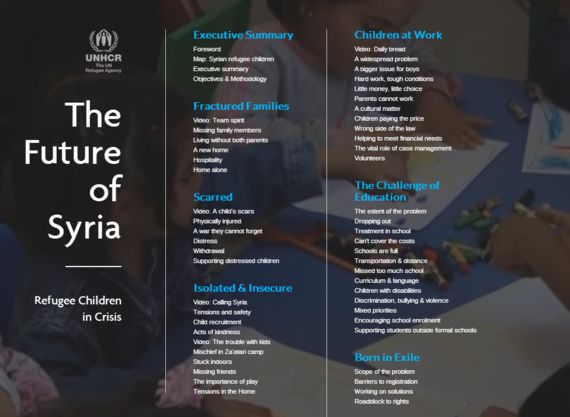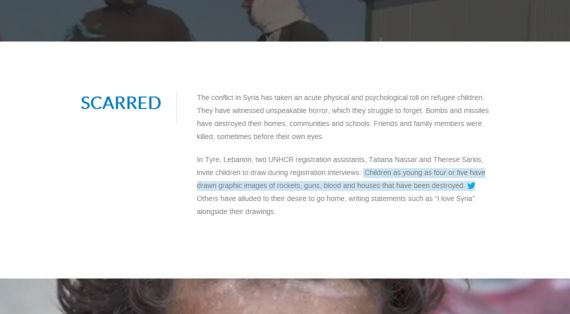
In what is a departure from their usual reports, the UNHCR has today released a report on the future of Syrian refugee children that has an excellent multimedia presence. The Future of Syria website documents some of the devastating research the UN body has carried out over the last few months in refugee camps across Lebanon and Jordan, and includes videos, images and content written in a style not unlike the well-known Snowfall from the New York Times last year.
A note I received from a friend who's worked on the project gave a bit of background to what they are hoping to achieve:
With this project we're trying to change the paradigm around how organizations communicate about humanitarian issues. We're doing this by making this report web-first, story-driven and highly visual, all the while grounded in the research and depth of data UNHCR is known for. We want to reach as broad an audience as possible in order to get more people talking, caring and donating. Expect a bespoke website with photos, videos, stories and quotes, all designed to be shared as widely as possible.
You can also download the entire report as a PDF document, but take the time to have a wander around the site itself - the stories of what the children are going through are hard-hitting and the addition of audio-visual content makes what would have otherwise been a fairly static report much more impactful. I laud the UNHCR for trying to go beyond the usual and for making use of technology to drive the point home - the point that children are the sad victims in this ongoing crisis, forced to stay at home instead of being able to go to school or enjoy a normal childhood.
Some of the facts:
29% of the children interviewed leave their home no more than once a week, if at all.
In Lebanon, it is estimated that some 200,000 school-aged Syrian refugee children could remain out of school at the end of the year.
77 per cent of 781 refugee infants sampled by the UNHCR over the last 4 months did not have an official birth certificate.
There are 1.1 million refugee children in Syria at the moment. As the UNHCR says, humanitarian organizations and governments are desperately trying to address their needs - but much more needs to be done if we are to avert a catastrophe.
The addition of sharing features via Facebook, Twitter and Pinterest will hopefully see the content spreading across the web rather than it just staying within the site.


I also highly recommend taking the time to watch the videos. This one features a young boy in a refugee camp narrating how they depend on their mobile phones for news of when it will be OK for them to return home to Syria; the visuals of a group of people standing atop rocks trying to catch a network signal is quite poignant.
Please head to the Future of Syria site and share the report as far and wide as you can.